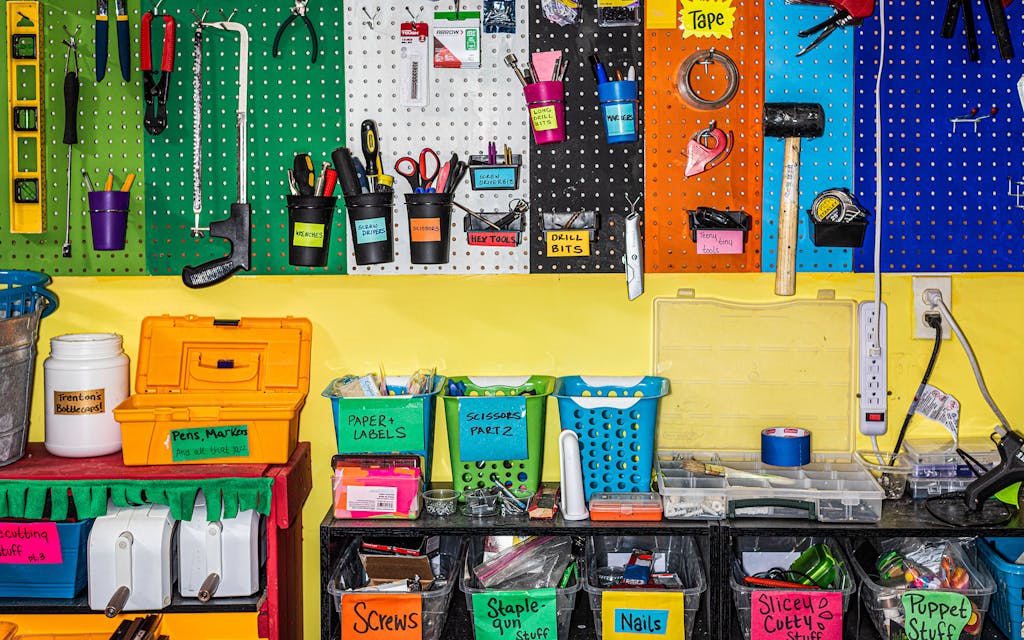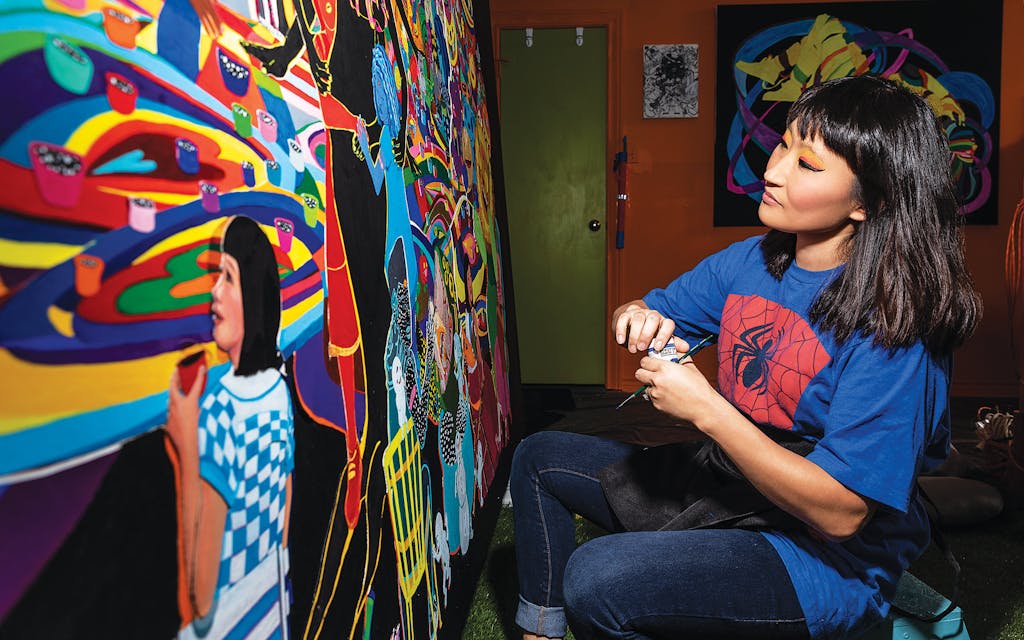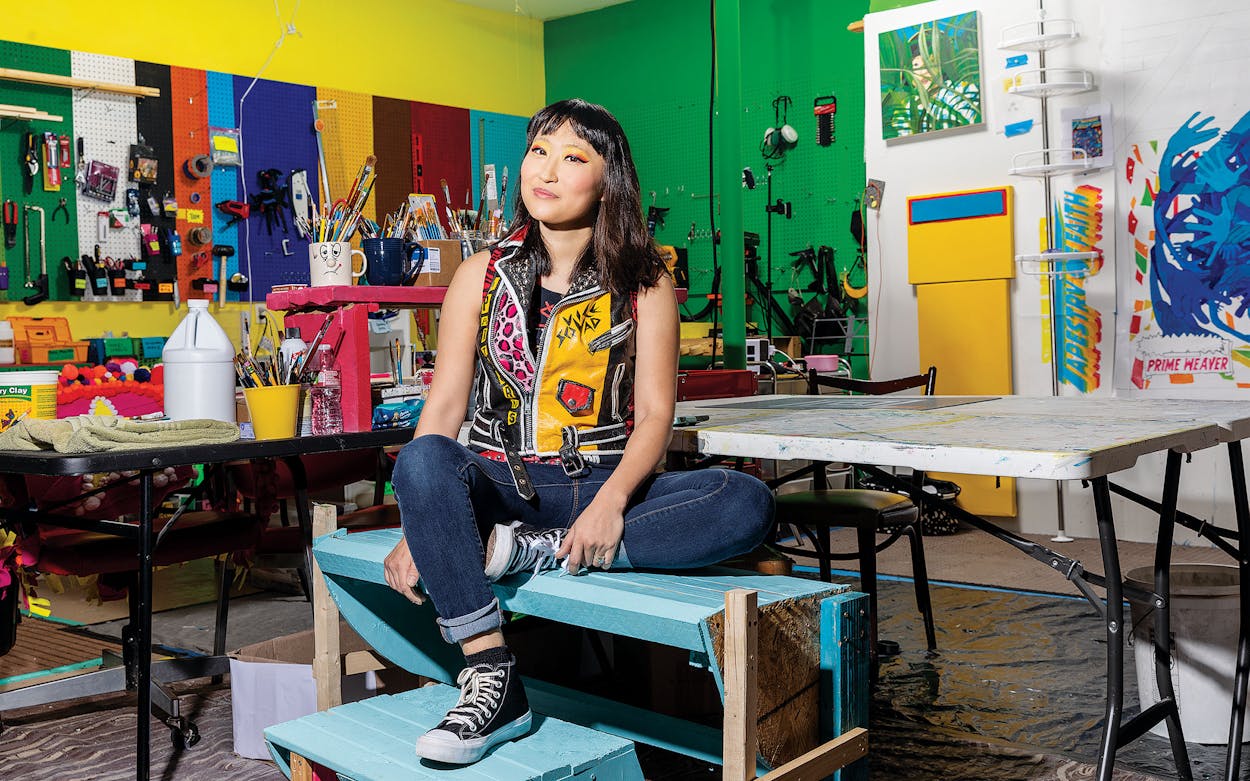Some nights, alone in her bed, Stacy Schwindt gazed at the stars outside her window and wondered if she’d ever meet her birth family. She had arrived in the U.S. from South Korea in 1983, several months after she was born. To help her assimilate, her adoptive parents named her after a popular television character at the time, police officer Stacy Sheridan from the series T. J. Hooker. There was less conversation then about racial microaggressions or Asian representation in the media, but growing up in Concord, New Hampshire, which is 89 percent white, Schwindt was constantly reminded that she would never look like Heather Locklear, the blond, blue-eyed actor who portrayed Sheridan. Some of her fellow kindergartners called her “pancake face.” Later, she felt bewildered when classmates made comments such as “You’re not Asian—you’re practically white.” Adults could be just as clueless. “Why can’t you just be a good, quiet little Oriental?” her boss’s mother scolded when Schwindt was a chatty teen working at a coffee shop.
So when she looked at the stars in the sky, she would wonder: Did she have her mother’s smile, her father’s eyes? Would she ever know them? Would they love her if she did? And who was she, exactly? She thought her middle name, JeeYung, was her birth name, but knew little else. Nothing in her life felt real.
The story of the girl who became the Houston visual artist JooYoung Choi could have led somewhere dark. Instead, Choi has chosen to create art that reflects an improbably sunny outlook. Even when she explores controversial themes such as gender fluidity, racism, and social justice, her work is so playful it wouldn’t raise eyebrows in a children’s museum.
Choi (pronounced “chay”) is a world-builder: over the course of a decade, she’s developed a paracosm, a highly detailed, imaginary world—think J. R. R. Tolkien’s Middle-earth or J. K. Rowling’s Hogwarts—through film, paintings, and sculptures. She calls her realm the Cosmic Womb, and to date she has filled it with 250 characters, each with distinct traits and a unique backstory. Her most comprehensive show yet, “Songs of Resilience From the Tapestry of Faith,” which unpacks important characters and the paracosm’s epic narrative, is on view at Dallas’s Crow Museum of Asian Art through September 4. San Antonio’s Blue Star Contemporary will mount the exhibition next year, from February 3 to May 7. In between, Choi also has a show of new paintings at the Houston gallery Nancy Littlejohn Fine Art that runs September 8 through November 5.
The Cosmic Womb is an inclusive place full of fantastical creatures. Its superheroes sometimes have to defend the realm against bullies, but Choi keeps the battles funny. Her protagonist and primary alter ego, C. S. Watson, is an East Asian schoolgirl from Concord who revels in her true self after she ascends to the Cosmic Womb through a bathroom shower. The initials stand for Choi, the artist’s birth family’s surname, and Schwindt, her adoptive family’s. Watson alludes to the central figure of John Singleton Copley’s painting Watson and the Shark, a late-eighteenth-century masterpiece based on the true story of Brook Watson, a fourteen-year-old orphan who lost a leg to a shark off the coast of Cuba in 1749 and was saved by a crew of men in a rowboat. Copley’s work prompted Choi to ask herself, “Who or what could rescue me from being consumed by ignorance and hatred?”
C. S. Watson’s allies in the Cosmic Womb include seven less obvious alter egos with East Asian characteristics: Queen Kiok, who wears a traditional Korean formal gown known as a hanbok, and her six youthful advisors, the Tuplets, who often appear as a cheerful girl band in live-action videos. (Choi, who composes all the music, performs every role.) Five of them have names—Lady K, Aidee Three, Emo Flowers No. 36, Novem Nine, and Big Six—that reference her adoption case number, K83-3696.


“Her work brings joy because it’s so bright and fun,” said Jacqueline Chao, the Crow’s curator. “But those who want to dive deeper can.” None of the characters are random inventions, and many are loosely inspired by people Choi knows. For example, Jade Weaver was inspired by her childhood friend Jasmine Kelly, a Black girl whose family left Concord, Choi says, because of racism. The oft-recurring villain Lady Madness, a raging narcissist who resembles the Incredible Hulk, represents a patchwork of bullies from throughout Choi’s life.
Choi presents some of the characters as puppets, animations, or live-action figures. Others appear in her soft-sculpture installations made of fabrics and foam. Her recent paintings are much more complex than those she first showed in Houston several years ago. Many of them are infused with a celestial polka-dot motif that creates an ecstatic, effervescent sense of motion, representing what she calls “quantum soup”—the energy that allows the Cosmic Womb to thrive.
Everything in Choi’s art is related, even if the overarching narrative isn’t sequential: time, space, and plots are fluid. Choi describes the Cosmic Womb as part of a multi-verse, a place that contains multiple realities. (It’s a familiar conceit in the Marvel comics she read growing up.) One constant is the Cosmic Womb motto “Have faith, for you have always been loved,” a line she sometimes uses as text in her paintings. It’s meant for anyone who sees her art, but it feels as if Choi wishes she could send those words back to her younger self—that lonely kid who gazed at the stars.

Choi is always eager to talk, at least when she isn’t working, which she does so compulsively—it’s not uncommon for her to be in the studio twenty hours a day—that she recently tried wearing an Apple Watch to remind her to take breaks and sleep. She speaks with a New England lilt that’s crisp around the edges. Geeky, a little bit punk, genial, and supersharp, she’s an amalgam of C. S. Watson and the Tuplets. But ask her about her childhood, and she becomes uncharacteristically reserved.
Choi found her family life difficult. She took refuge in Wizard of Oz books, Walt Disney’s animated features, the Muppets, Roger Rabbit cartoons, and superhero comics. She had a vivid imagination and was creating her own books before first grade. Many of her Cosmic Womb characters evolved from drawings she sketched as a child. But she wondered why there weren’t many Asian characters in the books, films, and television shows she loved. As a young adult, she also painted portraits of the birth parents she could only imagine.
A bigger spark for Choi’s seemingly boundless imagination came when she traveled to South Korea in 2007 to find her birth parents. She had been living near Boston at the time, attending the Massachusetts College of Art and Design and taking Korean language classes to prepare for the long-awaited trip. Slowly, she uncovered the truth of how she ended up in Concord.
Her adoption forms, which her mother had given to her when she turned 21, revealed that she was sent to the U.S. by Holt International, a pioneer of international adoption. In the wake of the Korean War, the organization led a movement to help Americans adopt many of the country’s orphans, including mixed-race children of U.S. soldiers.
The agency expanded across Asia during the Vietnam War, but South Korea was the world’s leading exporter of babies when Choi was born. According to the International Korean Adoptee Association, nearly 60 percent of children sent to the U.S. in 1982, the year before Choi arrived, came from South Korea—about three thousand. Many, including Choi, were so-called “social orphans” who had intact families or at least one living parent.
A few months after she got access to her adoption paperwork, Choi made contact with a cousin in Korea who shed light on Choi’s history. Because she was born out of wedlock, her birth wasn’t officially recorded, which meant she would never have a government-issued ID number, akin to a Social Security number. “It was like I didn’t exist,” she said. A relative sent her away when her parents weren’t present, setting off a family drama that lasted for years and led to her mother and father splitting up. Her father searched the country’s orphanages for a decade trying to find her.
Inaccuracies in Choi’s paperwork hampered his efforts. She was born a few months after the date on her papers, which was possibly fudged to make her seem older and thus more adoptable. And her name, she discovered, wasn’t JeeYung; it was JooYoung, which a relative translated as “crystal chalice overflowing with joy.” She started going by her birth name soon after she learned it and later made it her legal name. She was no longer Stacy Schwindt.
Choi’s first trip to South Korea had the life-altering impact she had dreamed of. “It’s just a seventeen-hour plane ride, if you’re lucky and don’t have a bunch of stopovers,” Choi said. “But in seventeen hours, your whole life can change. And it’s not just that the scenery changes. You change.” Her cousin had arranged a meeting with her biological father. When he arrived, Choi instantly knew him: he looked like the man she had painted portraits of when she was younger. They ran at each other and hugged, a moment Choi still treasures.
Over the course of multiple trips, she got to know both of her birth parents, her half-siblings, and numerous other relatives. The rifts that had formed in the family after she was sent away healed. She last visited Korea in 2016 but chats often with her family on KakaoTalk, a social media app.

Finding her birth parents, feeling their unconditional love, and uncovering her story gave Choi a new, powerful sense of herself. She read Nancy Verrier’s book The Primal Wound, about how children who are separated early from their birth mothers can be psychologically scarred, and riffed on the book’s title to come up with the Cosmic Womb’s name. Choi then formalized key characters and story lines in 2012 for her MFA thesis at Lesley University, in Cambridge.
Choi planned to move to South Korea after finishing at Lesley, until a soulmate superhero appeared like a bolt out of the blue. Trenton Doyle Hancock, a renowned artist whose comic book–inspired work is based on a paracosm called the Moundverse, gave a lecture in Boston shortly before Choi earned her undergraduate degree. Hancock, who was raised in Paris, Texas, agreed to mentor her for a semester during graduate school. Choi followed him to Texas, and they married in 2016. They each have studio rooms at their home outside of Houston, and their influence on each other has been profound. “We are a team. We help each other and take care of each other,” she said.
Choi’s infectiously optimistic work has always been aimed at improving the world around her. Her latest digital project, Spectra Force Vive: Infinite Pie Delivery Service, is a magnum opus of rock music, puppetry, video collage, live action, and animation that challenges the thinking that has led to recent state legislation targeting transgender youth. Her superheroes, such as Bunnie, a cybernetic transgender rabbit with shaggy orange fur, celebrate everyone for who they are and deliver “infinite pies” of truth and kindness.
Choi’s biggest painting yet, which is not quite finished, responds to the mistrust and lack of empathy that have distressed her during the coronavirus pandemic. It depicts a moment when a space virus has infected everyone in the Cosmic Womb, causing them to become lost in their fear and to doubt one another.
“Our imaginations can help guide us or even protect us when we are going through hard times,” Choi explained. “We need to use our imagination to find hope.” Whenever she’s having a hard time, she returns to the memory of hugging her birth father for the first time. That’s the love she most wants to share with others who feel outcast, as she once did, and it makes Choi a particularly fitting artist for these politically polarized times. “The fact that we were able to find each other was a miracle,” she said. “I felt like I had floated through life, and my heart finally entered my chest, and I had all the weight I needed to be fully standing on the ground. When he hugged me, that little missing part of me was put back into me. I was a whole person. And I did feel like a real person, finally.”
Molly Glentzer is a former arts writer at the Houston Chronicle.
This article originally appeared in the August 2022 issue of Texas Monthly with the headline “A Feel-good Epic.” Subscribe today.







